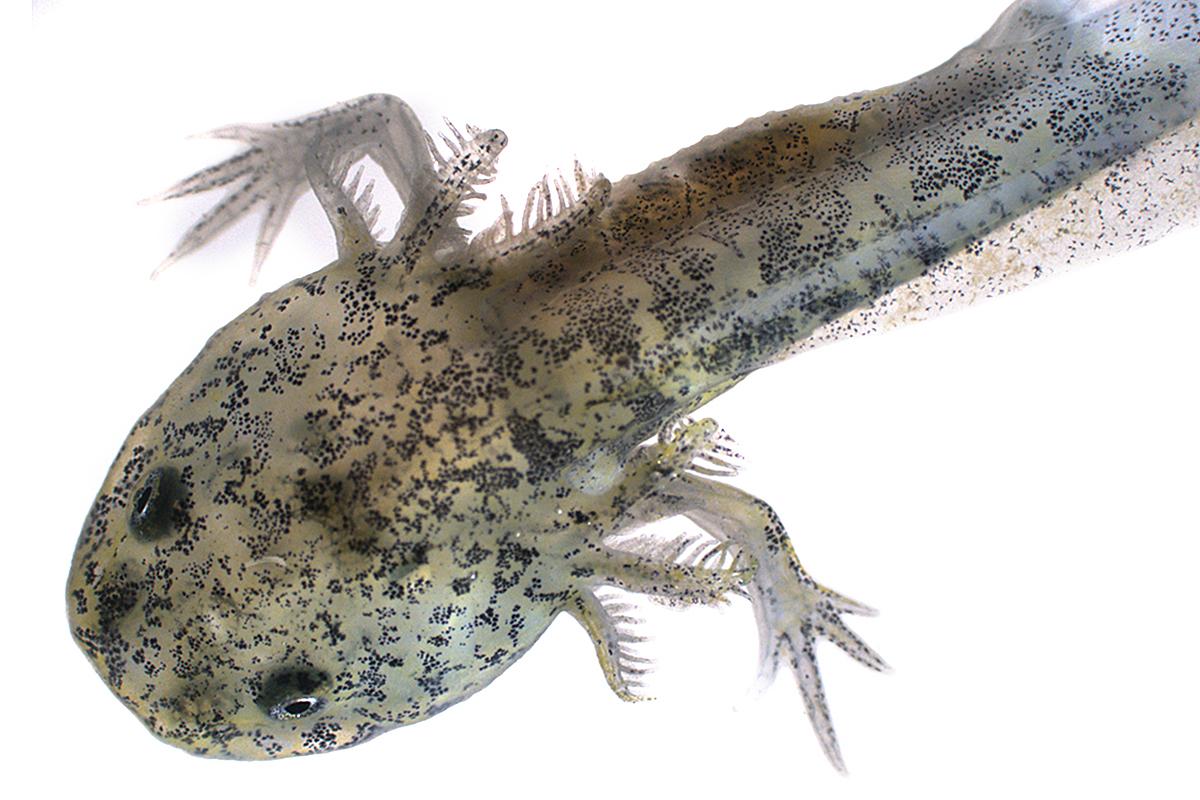Questions
Salamanders are exceptional amongst modern tetrapods because of their extensive regenerative abilities. These include not only parts of the internal organs, tails, and eye lenses, they are also the only four-legged vertebrates capable of fully regenerating their limbs. Salamanders are characterized by extremely variable life histories, including neoteny, metamorphosis and direct development. This generates a high level of homoplasies that can hinder phylogenetic analyzes and evolutionary interpretations. Thus far, it remains largely unknown how regenerative capacities in limbs vary between salamander taxa and how ecology, ontogeny and life-history strategies affect regeneration.
The aim of this research project is to investigate the influence of these parameters on regeneration capacity in terms of speed, accuracy, tissue organization and molecular markers. Other key aspects are the study of pathologies in salamander limbs and a comparison of the regenerative potential in different stages of life, as well as the comparative histology of regeneration in fossil amphibians (Micromelerpeton credneri) and extant salamanders.
Partners
Prof. Igor Schneider, Universidade Federal do Pará, Belem, Brazil
Duration
23.10.2017 – 22.10.2020
Funding
German Research Foundation DFG FR 2647/8-1
